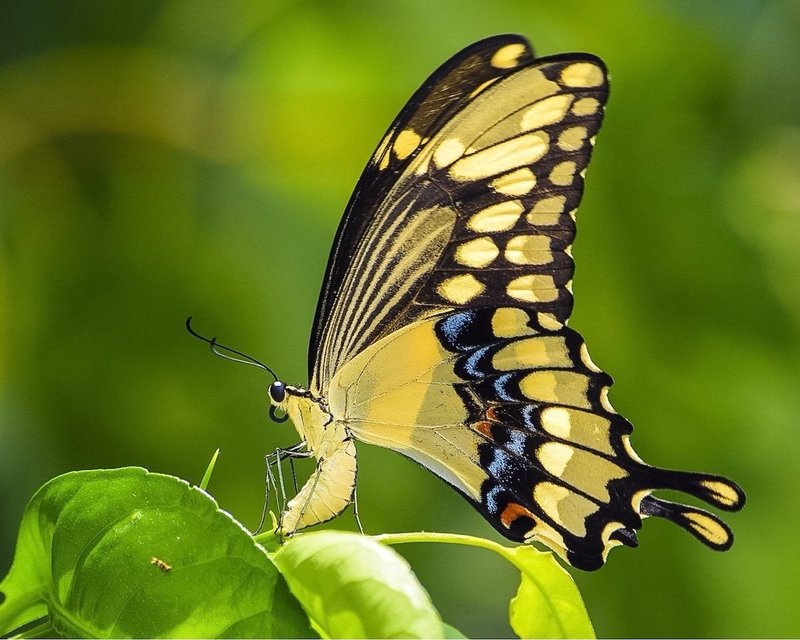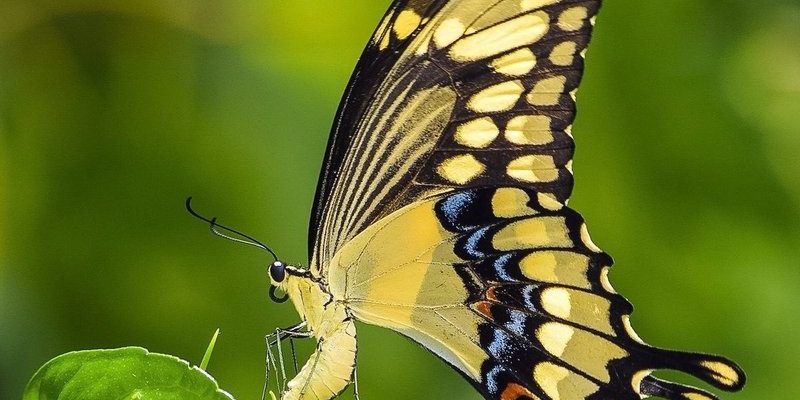
So, what makes swallowtail butterflies so special? Well, here are ten fun facts that might just make you love them even more. Grab a cup of coffee, and let’s dive into the captivating world of these fluttering wonders!
1. Diverse Species Worldwide
There are over 500 species of swallowtail butterflies scattered around the globe. From the iconic Eastern Tiger Swallowtail to the exotic Papilio machaon, these butterflies inhabit various environments, from tropical rainforests to temperate gardens. Each species comes with its own unique color patterns and behaviors.
You might be wondering, “What’s the difference between them?” Well, while some , like the *Swallowtail Papilio*, feature vibrant yellows and blues, others might display more muted tones, adapted to their surroundings for better camouflage. This diversity makes them a colorful representation of nature’s creativity.
2. Remarkable Lifespan and Transformation
Swallowtail butterflies go through a fascinating metamorphosis—that’s just a fancy word for the life stages from egg to caterpillar, then to pupa, and finally, to a beautiful butterfly. The entire cycle can take anywhere from a few weeks to several months, depending on the species and climate.
Interestingly, some swallowtails can live up to nine months, especially in their pupal stage, where they hibernate to escape harsh weather. This transformation reminds me of how we all go through changes in life; it’s about growing into our full potential, just like these enchanting insects.
3. Unique Defense Mechanisms
Swallowtail butterflies are equipped with some neat defense tricks. When threatened, they can release a foul-smelling chemical to deter predators. Additionally, many species, like the Pipevine Swallowtail, are mimicry masters. They often mimic toxic butterflies, tricking potential foes into thinking they’re dangerous. It’s like they have a bodyguard reputation to uphold!
This clever defense strategy allows them to thrive even in environments where predators lurk. Imagine walking confidently into a crowded room, knowing you’ve got a strong reputation that keeps unwanted attention at bay!
4. Eye-Catching Coloration
The vibrant colors of swallowtails are not just for show; they serve a purpose! Their bright yellow and blue hues help attract mates and signal to other butterflies. But did you know that their coloration also plays a role in thermoregulation? The lighter parts can reflect sunlight, keeping them cool on warm days.
Here’s the thing: those colors come from tiny scales on their wings, which can create iridescent effects as they flit about, dazzling anyone lucky enough to catch a glimpse. It’s like nature’s own version of a stunning fashion statement!
5. Impressive Navigation Skills
Swallowtail butterflies are known for their incredible navigational abilities. They can travel long distances—some species migrate hundreds of miles to find suitable habitats. It’s fascinating to think about how tiny creatures with such delicate wings can traverse vast distances, much like seasoned travelers exploring new territories.
Their keen sense of smell also helps them locate food sources, which typically include nectar-rich flowers. It’s a bit like how we might follow our noses to a local café when hunger strikes!
6. A Taste for Foul Foods
It’s not just nectar that tickles the taste buds of swallowtails. These butterflies are known to enjoy the salty flavors found in mud puddles and even animal dung! This behavior, called “puddling,” helps them absorb essential minerals and nutrients.
Picture this: while most of us would shy away from a mess, swallowtails dive right in. It’s a great reminder of how nature often finds value in unexpected places. So next time you see a swallowtail sipping from a puddle, think of it as their quirky way of going out for brunch!
7. Essential Pollinators
Swallowtail butterflies play a significant role in our ecosystem as pollinators. While they sip nectar from flowers, they help transfer pollen from one bloom to another, supporting plant reproduction. This partnership is crucial for producing fruits, vegetables, and flowers—all the things that make our environment vibrant and healthy.
By attracting these butterflies to our gardens, we can enhance biodiversity and create a thriving habitat for them. Just like how we invite friends over for a potluck, inviting swallowtails into our gardens can be just as rewarding!
8. Symbolism and Cultural Significance
Across various cultures, swallowtail butterflies symbolize transformation, beauty, and hope. They often appear in art, literature, and mythology, representing the idea that change can lead to something beautiful.
For instance, in Native American culture, they are seen as messengers of change and renewal. This symbolism adds an extra layer of appreciation for these butterflies; they’re not just pretty creatures, but also carry deep meanings in our collective human story.
9. Fascinating Courtship Rituals
When it comes to romance, swallowtails have some interesting courtship behaviors. Male swallowtails will engage in elaborate displays, showcasing their vibrant colors to attract females. This might include fluttering around, flying high, or even performing dance-like movements. It’s like they’re putting on a show just to win a date!
Once a male catches a female’s eye, their courtship often involves gentle nudges and mutual fluttering. It’s a beautiful dance of nature, reminding us that relationships often require a little effort and charm.
10. Conservation Challenges
Despite their beauty and importance, many swallowtail species face threats due to habitat loss, climate change, and pesticide use. It’s a real concern, as these butterflies are vital to maintaining healthy ecosystems.
To help protect these delightful creatures, we can create butterfly-friendly gardens, avoid harmful pesticides, and support conservation efforts. Every little action counts, much like how small ripples can create waves of change in nature!
Closing Thoughts
Swallowtail butterflies are more than just a pretty sight in our gardens. Their incredible adaptations, vibrant colors, and vital roles in ecosystems remind us of the beauty and complexity of nature. The next time you see one fluttering by, remember these ten fascinating facts and appreciate the wonder they bring to our world. Let’s cherish and protect these marvelous creatures so that future generations can enjoy their beauty too!

